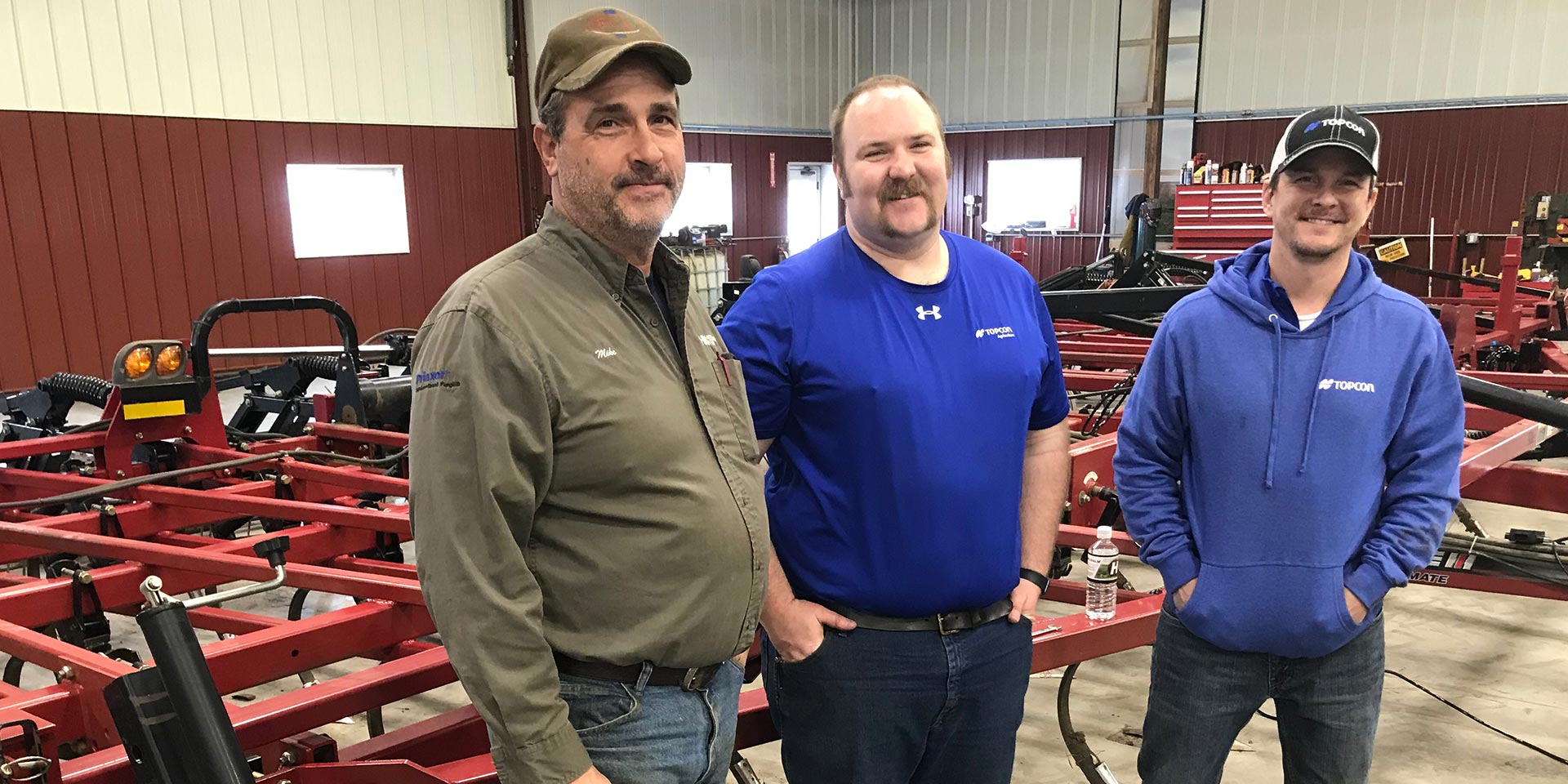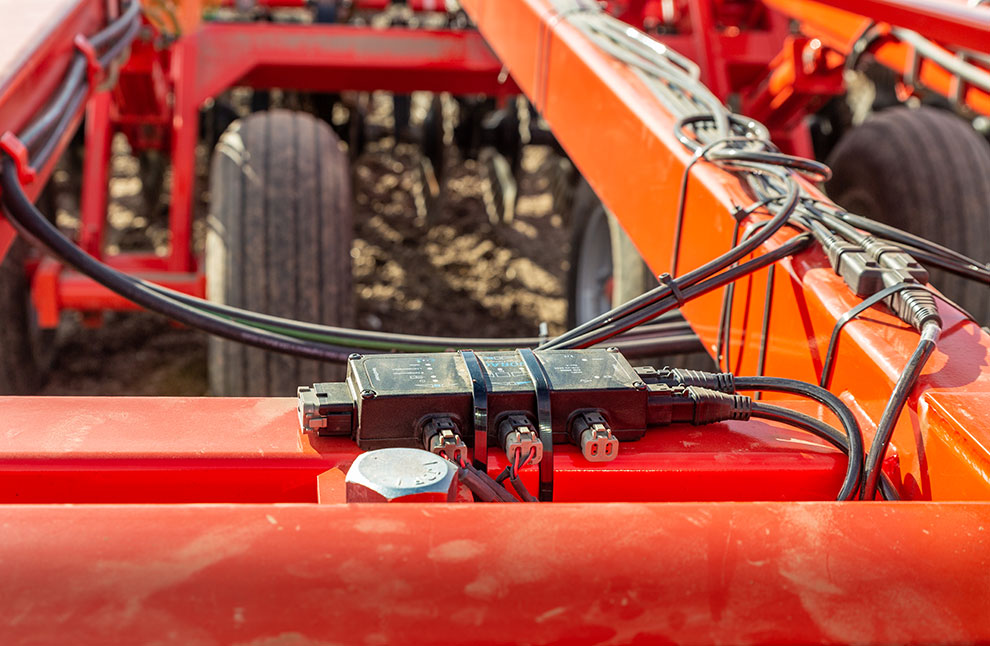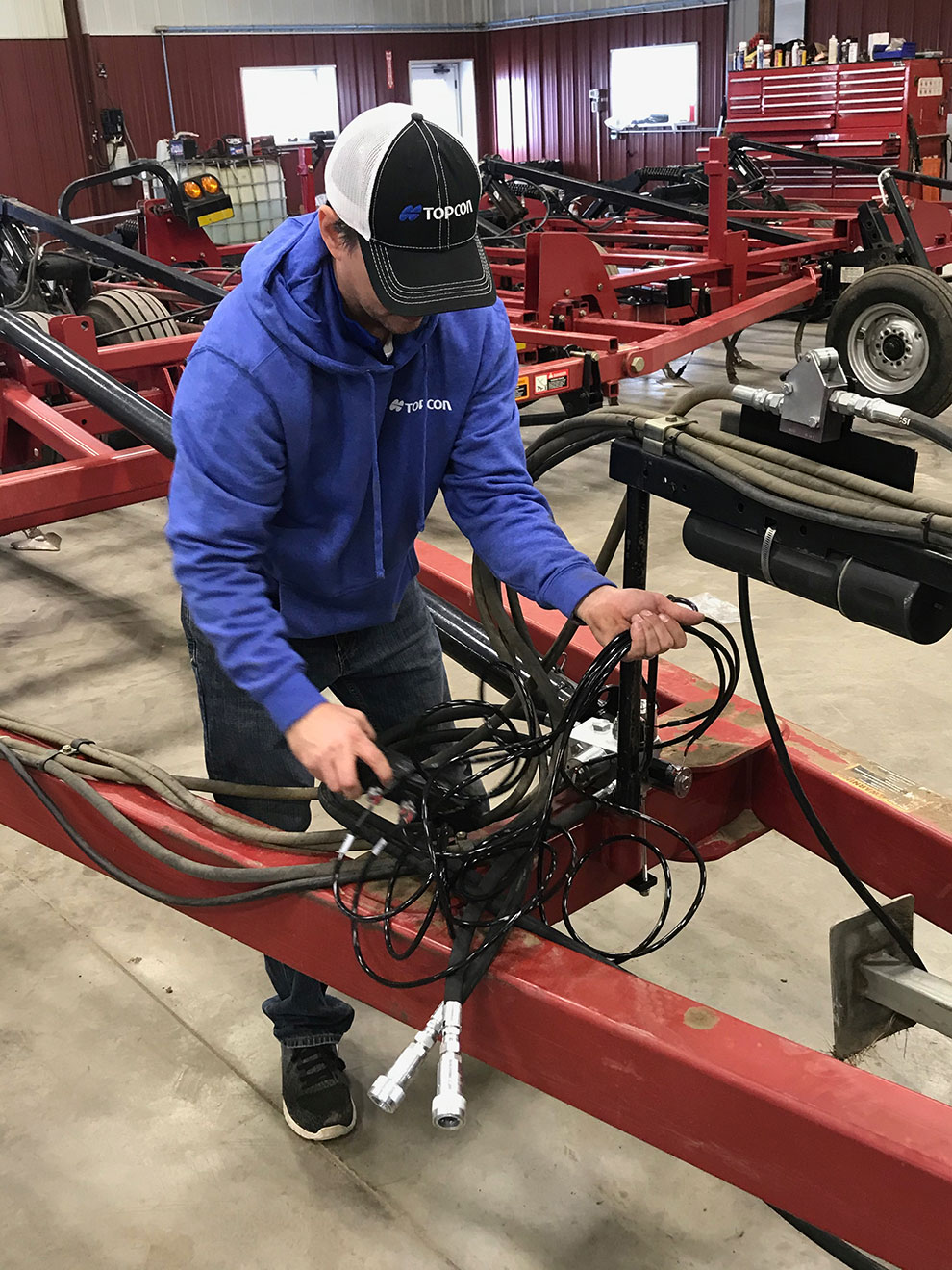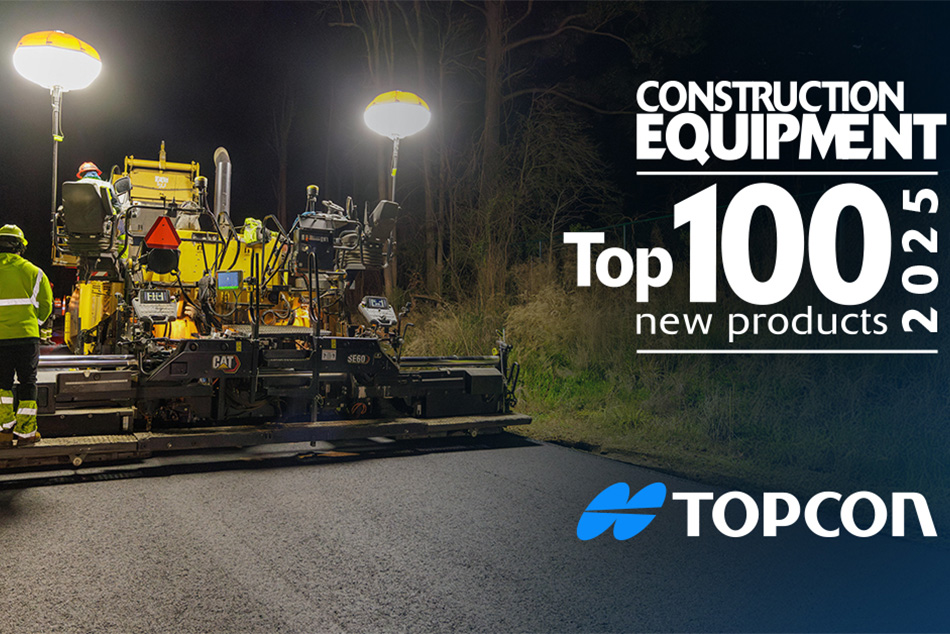Soybeans South
Established more than a half-century ago, HBS Research Farms is a 3,000+ acre operation that grows a range of crops but specializes in corn and soybeans. Owned and operated by the Hefty family, the Baltic, South Dakota farm is highly successful yet somewhat unconventional. The majority of its soybean crop, for example, is conditioned and sold back to seed, according to Mike Leuders, farm manager.
“We are a sister organization to Hefty Seed Company, so we are continually striving for improvements in support of their operation,” he said. “Hefty agronomists will provide us with a seed they’ve selected and, after our growing season, we will ship whatever particular variety of seed was selected that season to South America. Farms there will grow it and the following spring we will buy it from them as a parent seed. We will then plant that seed, clean it and re-sell it, which keeps expanding the volume of that seed crop.”
That commitment to excellence means staying ahead of the ever-changing technology curve which, for them, includes everything from automation to the latest precision farming techniques.
“We added autosteer around 1998 — a time when it was still a fairly new technology,” he said. “Today, we also have a sprayer with an automatic boom rate control, fertilizer rate control, steering, automatic header height control (for corn heads and soybean heads); even the planters have down pressure sensors to deal with different soil conditions. There is a lot of technology available today and we try to tap into the equipment that will benefit us most.”
The Need . . . for Seed
Tillage arguments aside, the importance of a uniform seed depth to any farming effort cannot be overstated. Issues such as different soil densities, porosities, etc., can all adversely affect seed depth and, by extension, optimum germination rates. According to Leuders that was one of the driving forces behind their interest in TDC.
“The need for a uniform seedbed is becoming more and more obvious to us,” he said. “Seed germination is dependent upon, among other things, the temperature of the soil and how fast it warms up. It is also impacted by how fast the moisture moves into the seed to allow it to germinate, how well it can maintain the moisture that is there, availability of fertilizer, access to sunshine, and so on. If the seedbed is a uniform depth — one determined to be ideal for those conditions — conditions will be enhanced for germination.”
He added that he suspects the overall efficiency of the operation will be enhanced by adding TDC as well, since digging too deep in some places and too shallow in others affects the power needed and increases fuel consumption. “For example, if we could maintain a consistent depth of 2” everywhere, it stands to reason that we will use less power than we would if we were diving in and out. Saving on fuel costs is always a plus.”
The 411 on TDC
The tillage control system to which Leuders refers, the Topcon Tillage Depth Control System from the Agriculture division of Topcon Positioning Systems, it uses Norac ultrasonic sensors to maintain a uniform, implement depth by automatically compensating for differing soil types and terrains. With its increased accuracy, the TDC system is designed to ensure tillage is done correctly — and easily. The automatic system not only reduces soil compaction and slippage in wet conditions, as Leuders mentioned, it also improves fuel and time efficiencies in the field.
Though HBS has the solution installed on a CIH Model 200 Tiger Mate Field Cultivator, TDC is adaptable to any type or style of trailing tillage implement with a hydraulic lift. Truly a “set it and forget it” system, it is also not reliant on a Topcon display; any factory display that supports ISOBUS Virtual Terminal functionality can be used. Depending on implement size, TDC is available in two- or four-sensor configurations
“Our soil here in eastern South Dakota (HBS’s farm is roughly 11 miles from the Minnesota border) is generally a loam, but it is mostly clay-based with some sand mixed in, so tillage is an important component for us,” said Leuders. “However, we have some farmable terraces that have been created to help control running water on the sides of hills. Obviously, we want to avoid plowing 8” deep in part of it and barely skim the surface on the rest — this will help alleviate that risk. And, though it doesn’t apply to us, some farmers, who dig out shallow ditches to help drain off surface water, could benefit from TDC’s ability to help them go over that without gouging one side and skipping the other.”
While many alternative tillage depth systems operate in an assumed system — one that essentially says: this is how the surface should look — HBS’s system instead looks at what is actually going on with the field. In wet conditions, for example, once the implement starts sinking, many of the other systems will indicate that the tool is still at the right depth and fail to make the necessary adjustment. The Topcon TDC recognizes that the disc is sinking and immediately signals to raise it to maintain the required depth or to lift it up completely.
“The ultrasonic system uses an echo that continuously bounces between the sensor and the soil, adjusting depth and control based on real-time conditions.” said Brady Bjornson, senior product manager at Topcon Agriculture. “Because of that, an accurate depiction of the area being dug is evident. In contrast, a system with a rotary hall sensor in the rock shaft, or pressure transducers in the cylinders, operating in adverse conditions, will not make that adjustment. They will keep indicating that you are digging at 2” even though you might be 2-feet under and struggling to recover by then. Those systems might be good in ideal conditions where there are no washouts or wet spots. But in the Prairie Pothole Region of the Dakotas, and western Minnesota — as well as many other locations — that is rarely the case.”
He added that the TDC system is designed with growers in mind who face changing, challenging conditions in which to dig in or plant — people with real world problems such as staring down crop insurance cut out dates. Tillage done correctly now, he said, can set a farmer’s field up for long-term success. “A grower has one or two chances in the spring to really get a good seed bed — this solution gets it right the first time regardless of conditions. And the difference will be evident when yield monitors are reviewed in the fall.”


















